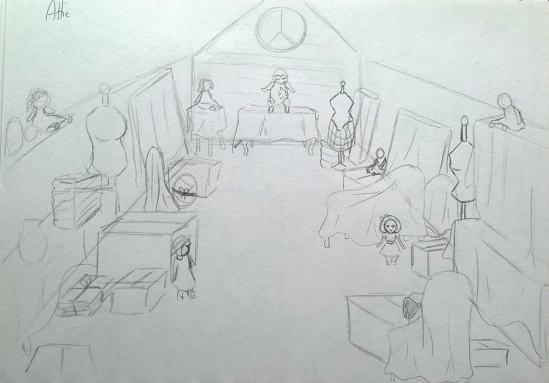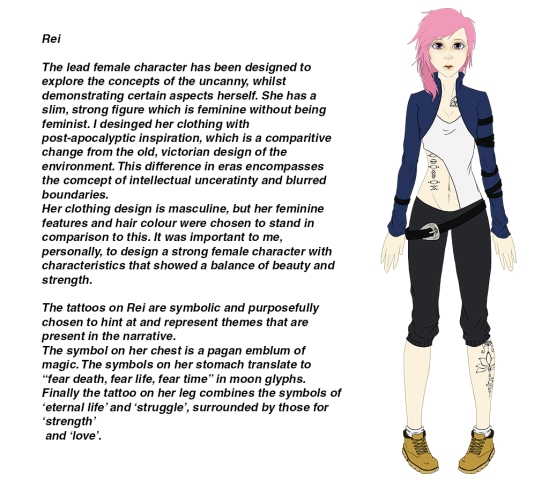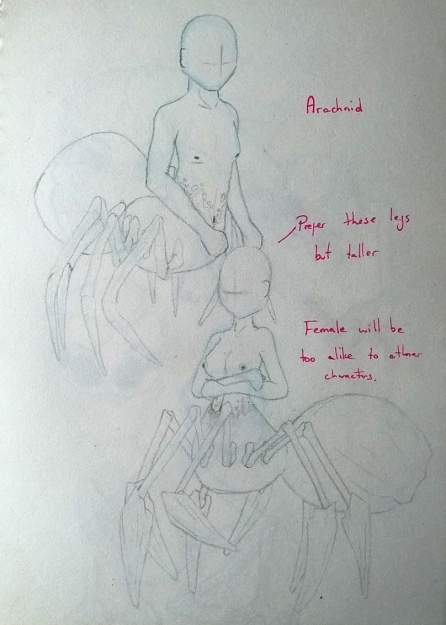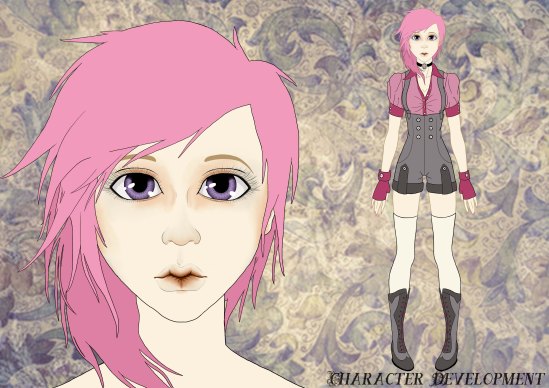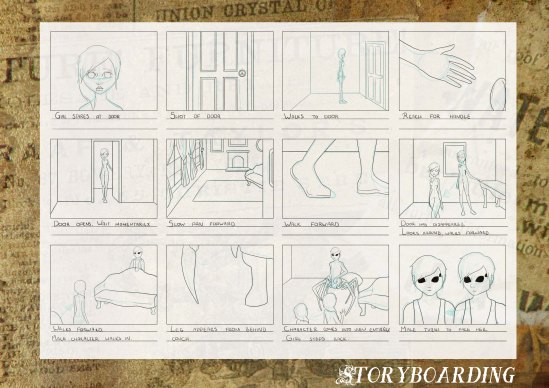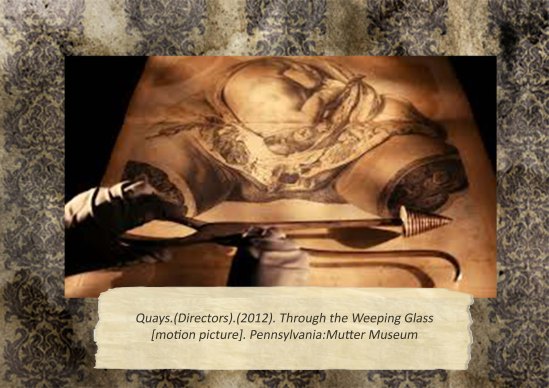Intellectual Uncertainty
Now knowing what is real, moving or alive.
The entire narrative should be fitting of this concept as it fits with all other elements and relates to all of the other concepts.
Helplessness
Can’t get out or escape. A sense of inevitability.
Character can’t escape a loop (time/space?). Doors lost or boarded up. Certain situations arise with only one possible solution or outcome with no way around or out of it.
Unintended Repetition
Loops that can’t be escaped. Perhaps not obvious until the end. The same character over and over again.
One character appearing everywhere, multiple versions of the same character. Repetitive situations or maybe a full narrative loop.
The Omnipotence of Thoughts
Belief that dreams or wishes come true. The use of thoughts or rituals to try to change something that would not, realistically, have any influence over the desired outcome.
Voodoo, magic or the use of dark symbolism associated with witchcraft.
Animism/Automata
Living dolls and robots.
Mannequins coming alive, perhaps subtle. Living dolls, baby dolls or part human/part doll hybrids. Parts of the building or wall decorations coming alive.
Paranormal/Magic
Ghosts, Poltergeists and CreepyPasta monsters. Objects, doors and characters disappearing into thin air.
A CreepyPasta monster character, the Rake? Disappearing doors.
Castration Complex
Eyes being lost, gauged out or blind characters.
Version of the main character without eyes. Eyes being sliced open/gauged to progress. Also related to helplessness.
Blurred Boundaries
Life and Death. Animate and Inanimate. Light and Dark.
Mannequins, decorations and skeletons all displaying these properties. Sometimes things appear beautiful and then turn dark. Perhaps different scenes have contrasts.





